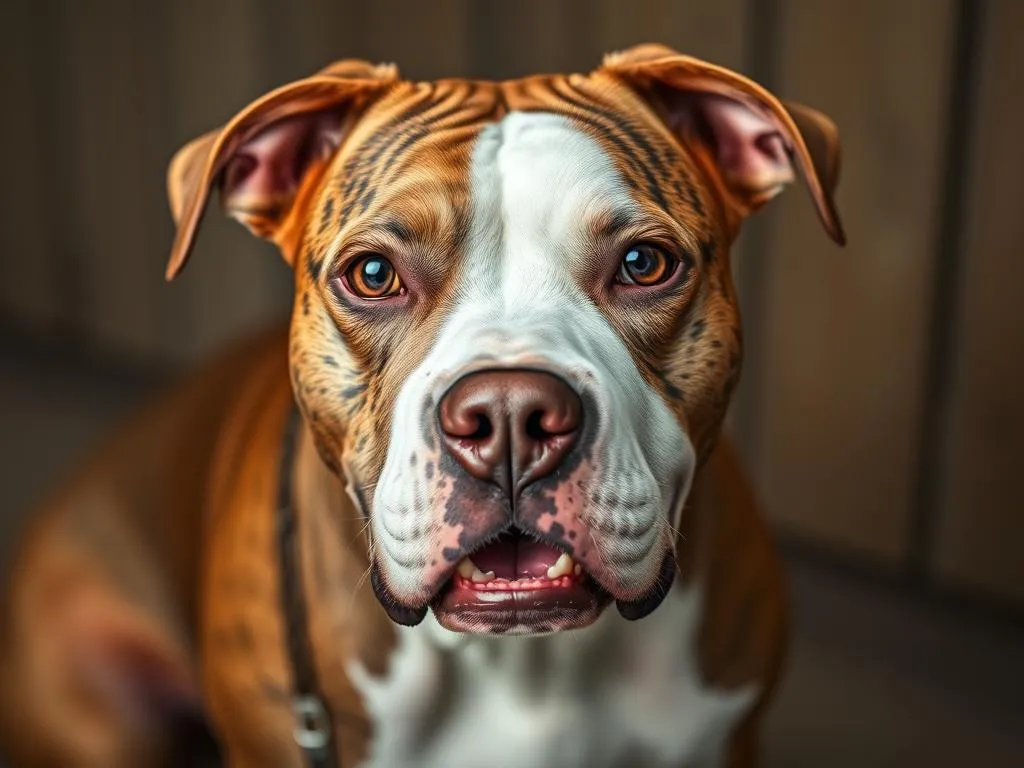
Understanding dog breeds is essential for any potential dog owner, especially when considering allergies. Among the many breeds, one question often arises: Is a Pit Bull hypoallergenic? This article explores hypoallergenic dog breeds while specifically addressing the case of the Pit Bull, shedding light on their characteristics and allergenic potential.
Understanding Hypoallergenic Dogs
What Does Hypoallergenic Mean?
The term hypoallergenic refers to a breed that is less likely to trigger allergic reactions in sensitive individuals. This doesn’t mean that these dogs are completely allergy-free; rather, they are known to produce fewer allergens. Allergens from dogs primarily come from their skin flakes (dander), saliva, urine, and feces. Understanding the sources of allergens is crucial for those considering dog ownership, especially for allergy sufferers.
Common Misconceptions About Hypoallergenic Dogs
Many people believe that hypoallergenic dogs do not shed at all, which is a myth. In reality, all dogs shed to some degree, and shedding contributes to dander production. The key distinction lies in the amount of dander and allergens specific breeds produce. Additionally, individual dogs may vary significantly; some may produce more allergens than others, irrespective of breed.
The Mechanics of Dog Allergens
Types of Allergens Produced by Dogs
Dogs produce several types of allergens, which can affect allergy sufferers in different ways:
- Dander: Tiny flakes of skin that can become airborne and trigger allergic reactions.
- Saliva: When dogs groom themselves, their saliva can land on their fur and skin, contributing to airborne allergens.
- Urine and Feces: These can also contain proteins that cause allergies, although they are less commonly encountered in the home environment.
Understanding these allergens helps gauge the potential impact of dog ownership on allergic individuals.
Factors Influencing Allergic Reactions
Allergic reactions can vary widely among individuals. Genetics plays a significant role in determining one’s predisposition to allergies. Moreover, the environment and the level of exposure to allergens can greatly influence how a person reacts. For instance, someone with mild allergies may tolerate certain breeds better than others depending on their unique sensitivities.
Overview of Hypoallergenic Dog Breeds
Popular Hypoallergenic Breeds
Several dog breeds are commonly regarded as hypoallergenic due to their lower allergen production and minimal shedding. Here are a few popular ones:
-
Poodle: Available in standard, miniature, and toy sizes, Poodles have a curly coat that traps dander and hair, preventing it from becoming airborne. They are intelligent and easy to train.
-
Bichon Frise: This breed has a soft, curly coat that requires regular grooming. Bichons are known for their friendly disposition and adaptability.
-
Maltese: With their long, flowing hair, Maltese dogs do not shed much, making them a popular choice for allergy sufferers. They are affectionate and lively.
Each of these breeds has unique characteristics, such as size, temperament, and grooming needs, making them suitable for various lifestyles.
Characteristics of Hypoallergenic Breeds
Hypoallergenic breeds typically share certain traits that contribute to their lower allergen levels. These traits include:
- Curly or Wavy Fur: This type of coat helps trap dander, preventing it from becoming airborne.
- Minimal Shedding: Dogs that shed less tend to produce fewer allergens.
- Regular Grooming Needs: Frequent grooming helps remove loose hair and dander, further reducing allergens in the home.
Maintaining proper grooming and care is essential for managing allergies effectively.
Are Pit Bulls Hypoallergenic?
Breed Overview: Pit Bull Characteristics
Pit Bulls are often misunderstood due to their reputation, yet they possess a loyal and affectionate temperament. These dogs are medium-sized and muscular, characterized by their short coat, which can come in various colors. Pit Bulls are known for their intelligence, energy, and playfulness, making them great companions for active families.
Despite their popularity, there are many misconceptions surrounding Pit Bulls, often leading to concerns about their suitability for allergy sufferers.
Allergen Production in Pit Bulls
When considering whether Pit Bulls are hypoallergenic, it is essential to examine their allergen production. Pit Bulls do shed, and they produce dander, saliva, and other allergens like any other dog. However, the amount of allergens they produce may not be significantly different from other short-haired breeds.
For those with allergies, it’s crucial to understand that while Pit Bulls can potentially trigger allergic reactions, individual reactions can vary widely. Some allergy sufferers may find they can tolerate a Pit Bull better than other breeds, while others may not.
Personal Experiences and Anecdotal Evidence
Anecdotal evidence suggests a mixed experience among Pit Bull owners regarding allergies. Some owners report that they or their family members do not experience significant allergic reactions, while others have had to make adjustments in their homes to accommodate their allergies.
Many owners emphasize the importance of proper grooming and cleaning to minimize allergens. Regular baths and grooming can help reduce dander and hair buildup, making living with a Pit Bull more manageable for allergy sufferers.
Tips for Allergy Sufferers Considering a Pit Bull
Managing Allergies Around Dogs
For those who are considering bringing a Pit Bull into their home, managing allergies effectively is paramount. Here are some strategies to consider:
-
Regular Grooming: Frequent brushing and bathing can help significantly reduce dander and loose hair in the home.
-
Cleaning Routine: Establish a cleaning routine that includes vacuuming carpets and upholstery with a HEPA filter and washing dog bedding regularly.
-
Air Quality: Using HEPA air purifiers can help reduce airborne allergens in your environment, providing a healthier living space.
Introducing a Pit Bull to an Allergic Household
If you or a family member has allergies, it’s essential to take steps before introducing a Pit Bull into your home. Here are some practical tips:
-
Trial Period: Spend time with a Pit Bull before committing to ownership. This can help gauge any allergic reactions and adjust accordingly.
-
Gradual Introductions: Introduce the dog to allergy sufferers gradually. Monitor reactions closely during this period to assess comfort levels.
-
Consulting Professionals: Speak with a veterinarian or an allergy specialist to gain insights tailored to your situation, especially regarding the specific needs of your household.
Conclusion
Summary of Key Points
In summary, while many dog breeds are considered hypoallergenic, no breed is entirely free from allergens. Pit Bulls, in particular, are not classified as hypoallergenic dogs, but their allergen production may not be significantly different from other breeds. Individual experiences vary, making it essential to consider personal sensitivities when choosing a dog.
Final Thoughts
Ultimately, selecting a dog should involve a deeper consideration of the individual dog’s behavior, temperament, and how they fit into your lifestyle, rather than focusing solely on breed. Consulting with allergy specialists and reputable breeders can provide valuable insights tailored to your needs, ensuring a harmonious relationship between you and your future canine companion.
FAQs
Are all Pit Bulls hypoallergenic?
No, Pit Bulls are not considered hypoallergenic. They produce dander and allergens like other dog breeds, but individual reactions may vary.
What breeds are hypoallergenic?
Some popular hypoallergenic breeds include Poodles, Bichon Frise, and Maltese. These breeds typically produce fewer allergens.
Can regular grooming help with allergies?
Yes, regular grooming can help minimize allergens in the home by reducing dander and loose hair.
How can I reduce allergens in my home with a dog?
Establish a cleaning routine, use air purifiers, and groom your dog regularly to help reduce allergens in your living space.









